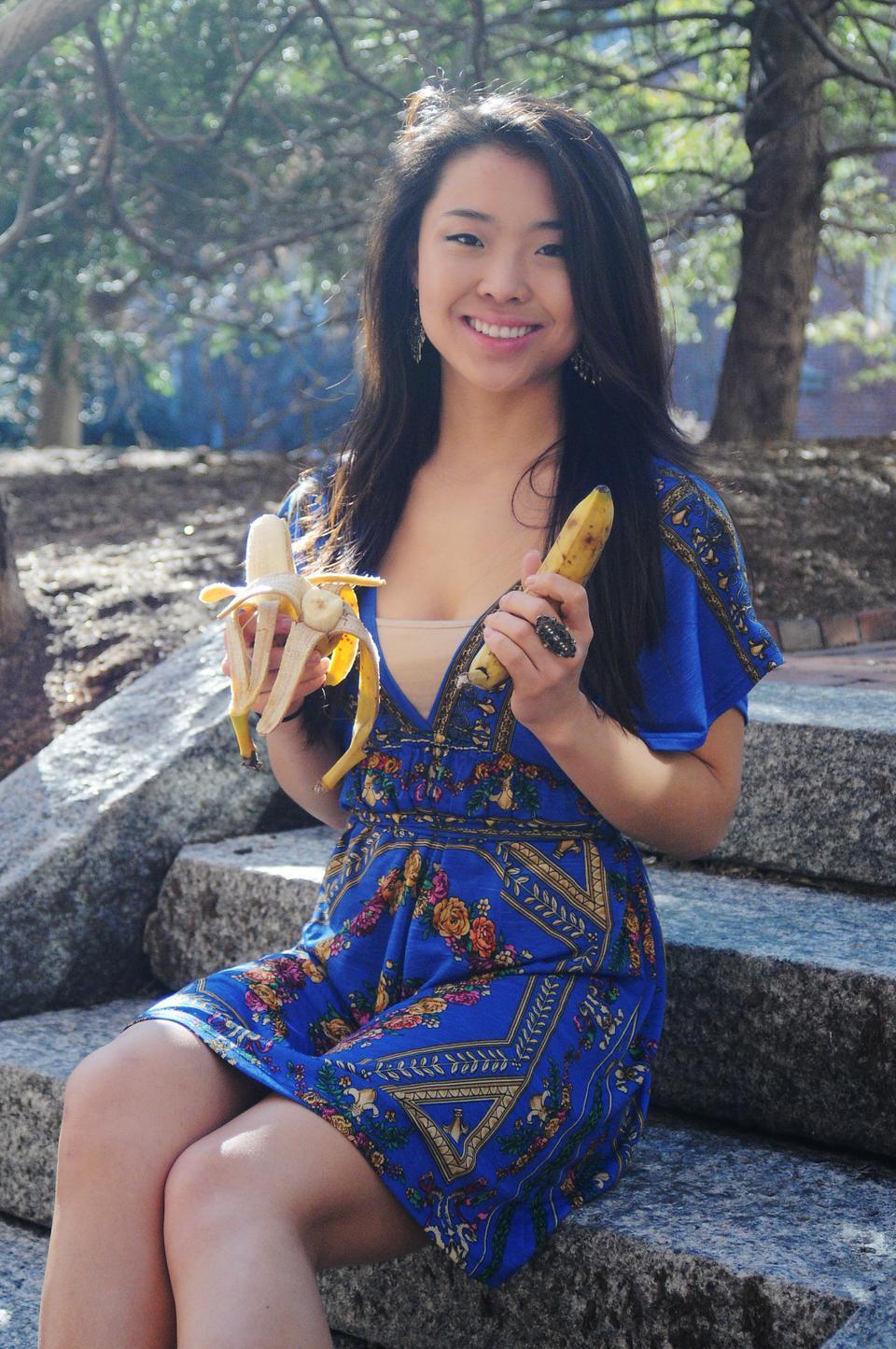
Giving Raw Food the College Try
I began to worry after I’d eaten my seventh banana in two days.
I had embarked on a three-day raw food veganism challenge, relying on fruit, salads, and some unroasted convenience store nuts to fill my uncooked days.
I had no blender, knives, or kitchen. I did, however, have a lot of homework, social commitments at restaurants, and HUDS produce. I already knew that gourmet raw food—which I had sampled at all-raw Grezzo in the North End—was a sensory delight. But my DIY approach smacked of banana-infested, blender-lacking monotony.
Well, at least I knew I wasn’t going at it alone. Raw food has become more mainstream in recent years, receiving attention in the popular press and heralded in documentaries such as “Supercharge Me!”, where one woman ate raw for a month and filmed the results. Boston itself is home to a number of raw foodists, with an online group boasting 516 members and 145 meet-ups.
Enthusiasts use words such as “living,” “enzymes,” and “glow.” They liken eating raw to ingesting life and energy. They also make dubious scientific claims. “All cooked food is devoid of enzymes, furthermore cooking food changes the molecular structure of the food and renders it toxic,” claims www.living-foods.com. Raw foodists will eat at least 75 percent raw, with approaching 100 percent as the ideal.
So what can you eat on a raw food vegan diet? In an (unroasted) nutshell: raw fruits, vegetables, nuts, seeds, sprouts.
Yes, that’s it.
That’s how I found myself unwrapping banana number three before class. Then I ate an orange and polished off a bag of raw almonds, on top of a bag of raw cashews.
As the day wore on, I realized I had to entirely reconceptualize food. The world is not designed for the fruit-munching, crudite-worshipping raw foodies of the world. Strict adherents will not heat anything above 115 degrees Farenheit; they claim that above this temperature, food loses vital nutrients and enzymes. That includes water.
Around 4 p.m., tired and feeling bloated from eating six servings of nuts, three oranges, four bananas, raspberries, cantaloupe, baby carrots, and a salad, I gave into my first cooked sin.
Coffee. Made from roasted coffee beans and boiled water. I should have just thrown in a well-done, factory-farmed steak to complete my philandering ways.
After being thrown off track, I went back to Mother Raw with another HUDS-bestowed banana. I looked in the mirror to check my physical progress: my eyes and skin weren’t glowing, but on the plus side, I didn’t look more monkey-like.
Day Two was a lot easier until it came to lunch. I was in a rush, but also sick of endless meals of fruit. So I wrapped a dill pickle in a lettuce leaf and drizzled some honey on it. Sort of like a hot dog. Was the pickle raw? Was honey vegan? Hadn’t it been pasteurized?
Annoyed, I began typing a list of pathetic dining-hall recipes on my laptop.
“Add one dill pickle to limp lettuce leaf,” I wrote bitterly. “Drizzle with honey. Eat with guilt, defiance.”
If I had endless time and kitchen equipment, I’d have attempted the recipes in “Raw Food, Real World” by Matthew Kenney and Sarma Melngailis. Written by a photogenic and now defunct couple, the book touted the benefits of raw food with a kind of sexy, spiritual zeal. Pastas, lasagnas, and crackers were re-imagined with ribbons of squash, nut pastes, and dehydrated vegetable pulp. Raw chocolate ganache tart, anyone?
On the plus side, all the fiber from oranges, beyond promoting digestive regularity, also kept hunger pangs at bay. During seminar, I got my first rush of raw food moral superiority when I wasn’t tempted by a giant bowl of cheese cubes.
“I’m on a raw food vegan diet,” I announced proudly.
One classmate said, point blank: “You’re going to die.”
I can say with confidence that I’m still alive after my foray into fruitarianism (there are also raw juicearians and sproutarians; exactly what it sounds like).
One: I did not starve. I’ll credit that to the amazing banana. The sweet, starchy fruit was to my experiment what potatoes were to the Irish.
Two: There was a spare, poetic beauty in eating raw. Decision-making was decluttered; I spent less time choosing (should I eat the popcorn chicken or the steamed fish?) and more time chewing (I guess I’ll grab another banana).
Three: My strategy of eating a lot of fruit would not be sustainable over the long term. If I’d attempted to live entirely raw for a prolonged period of time, I’d run the risk of reduced bone density and fertility issues. Vitamin B-12 deficiencies are another constant concern for vegans, who have to put more thought into their diets to make sure they’re getting enough nutrients. Richard W. Wrangham, author of “Catching Fire: How Cooking Made Us Human,” makes a convincing argument that cooking is what allowed Homo sapiens to evolve into the large-brained, small-gutted creatures we are today.
I don’t doubt that some people are able to healthfully eat raw. But all the questionable claims began to wear on me. And as I perused an online message board, I noticed that there was an entire section dedicated to raw vegan food pet diets. One person posted a link to RawFedCats.com. Another poster noted that his wife’s hair had been falling out. And one thread rhapsodized about water fasting.
So once I broke my diet with a meal of ribs and beer, I didn’t look back. I can always tack on that banana for dessert.


